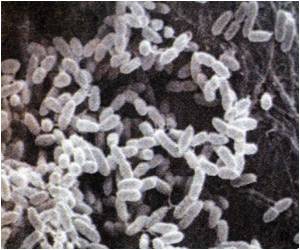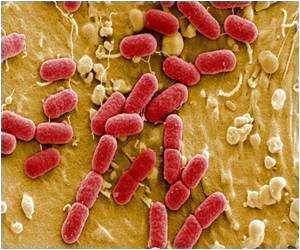Left-handed corkscrews point the way to develop a novel weapon in the battle against superbugs like E.coli and methicillin-resistant staphylococcus aureus (MRSA), say scientists.

By twisting molecules around iron atoms they have created what they term 'flexicates' which are active against MRSA and E-coli - but which also appear to have low toxicity, reducing the potential for side effects if used in treatment.
The work is published in Nature Chemistry.
The new structures harness the phenomenon of 'chirality' or 'handedness' whereby the corkscrew molecules could be left-handed or right-handed.
By making the most effective 'hand' to attack a specific disease, the University of Warwick research paves the way towards a more targeted approach to killing pathogens.
In the case of E-coli and MRSA, it is the left 'hand' which is most effective.
Advertisements
"It's a whole new area of chemistry that really opens up the landscape to other practical uses.
Advertisements
"Flexicates are also easier to make and produce less waste than many current antibiotics."
Scientists have long been able to copy nature's corkscrew-shaped molecules in man-made structures known as helicates – but they have thus far not been able to use them in fighting diseases.
One of the key issues is the problem of handedness.
Sometimes 'left-handed' molecules in drugs are the most effective at combating some disease, while sometimes the 'right-handed' version works best.
Until now, scientists working with helicates have found it difficult to make samples containing just one type of corkscrew; either the right- or left-handed twist.
But with flexicates, the University of Warwick scientists have succeeded in making samples containing just one type of twist – resulting in a more targeted approach which would allow the drug dosage to be halved.
And flexicates solve other problems encountered by helicates, as they are easier to optimise for specific purposes, are better absorbed by the body and are also easier to mass-produce synthetically.
Professor Scott said: "Drugs often have this property of handedness - their molecules can exist in both right and left handed versions but the body prefers to use only one of them."
"For this reason, drug companies have to go to the trouble of making many traditional molecules as one hand only.
"What we have done is solve the 'handedness' problem for this new type of drug molecule.
"By getting the correct hand we can halve the drug dose, which has the benefits of minimising side effects and reducing waste.
"For patients, it's safer to swallow half the amount of a drug.
"Our work means that we can now make whichever hand of the corkscrew we want, depending on the job we require it to do."
Source-Eurekalert









